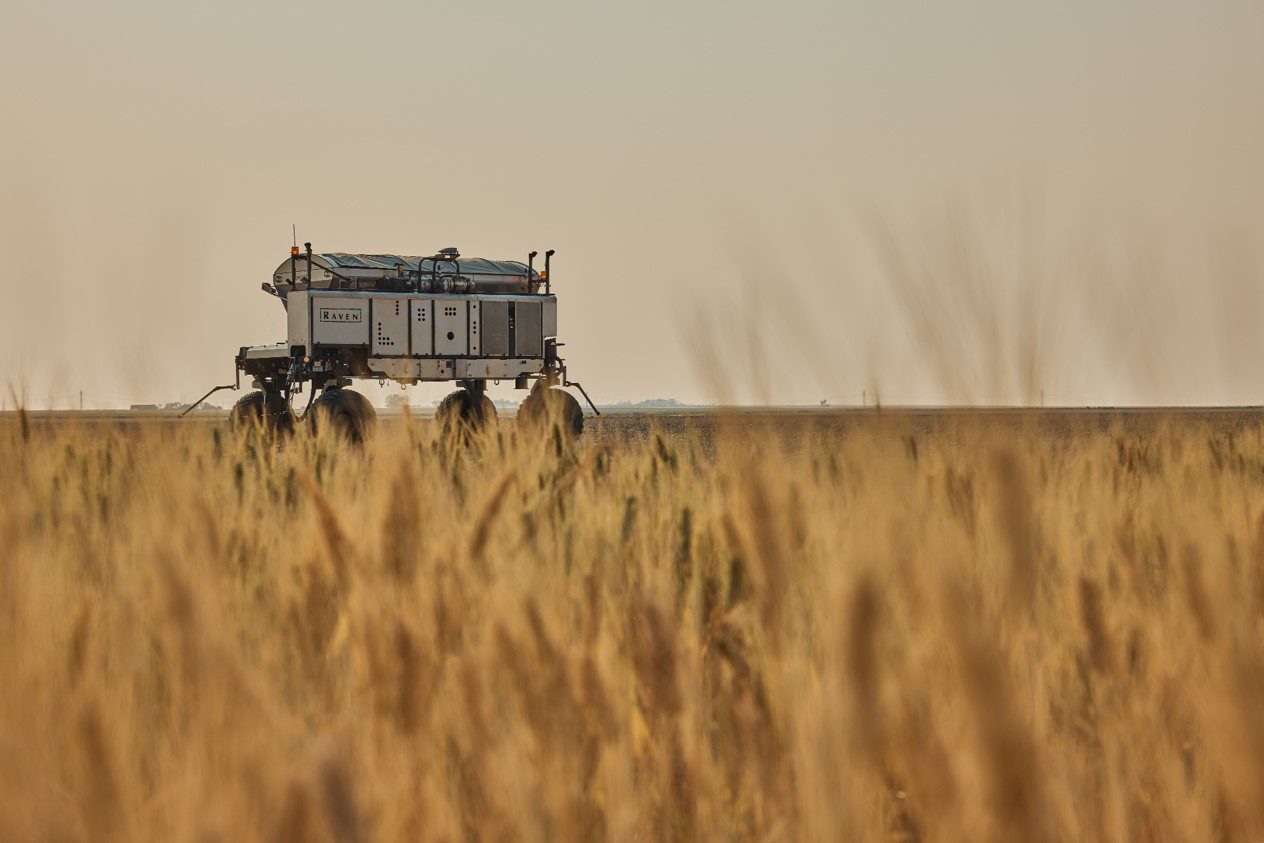
The professionals who manage CAAIN-supported projects tend to have one thing in common: a background in agriculture. Not so Raven Industries’ Manager of Business Excellence, Marco Coppola, who leads the Artificial Intelligence (AI) Development for Autonomous Agriculture Application initiative. Growing up in Regina, Saskatchewan, he couldn’t not understand the importance of farming to the socioeconomic fabric of his native province, but he wasn’t surrounded by it, and his Business degree focused on marketing and entrepreneurship, rather than ag. In 2017, while working for Saskatchewan Export and Trade Partnership, a provincial body tasked with connecting local companies with new markets, he provided support to farm-implement manufacturer SeedMaster. His efforts were appreciated, and one of the company’s principals contacted him about joining DOT, a sister enterprise that was just starting its journey to develop autonomous farm equipment.
“The opportunity seemed exciting, because it involved a blend of high technology and agriculture,” he explains. “I decided to go for it, and the past six years have been very rewarding. Our product is an autonomous power unit that performs various agricultural functions traditionally associated with a standard tractor. Instead of hooking up the tractor and towing a seeder or a sprayer, the farmer connects the implement to our platform, and programs in the mission, which is then completed autonomously. Because OMNiPOWER™ is self-propelled and carries the implement instead of pulling it, using our technology manages soil compaction, reduces fuel costs and emissions, and mitigates the effects of labour shortages. This last benefit is growing in importance. A recent study predicted that by 2025, 114,000 agriculture-related jobs will go unfilled across Canada, which represents more than 25% of the nation’s entire agricultural workforce, resulting in millions of dollars of lost productivity annually.”
Marco and his colleagues have made great strides despite experiencing significant change over the past 24 months. In 2021, DOT was acquired by Raven, which in turn was bought out by Case New Holland (CNH). In a relatively short period of time, the team went from 28 core employees to being part of a 60,000-person multinational corporation. Such a transition could have derailed the project, but the opposite is true. The result has been expanded capacity and resources, and an unwavering commitment to delivering on the objectives contained in the original DOT-CAAIN funding agreement.
The project team has researched and developed software and AI functions that include a classification model, autonomous implement loading, computer- and camera-assisted vision, multi-unit operation, field mapping, and the collection and processing of data. The result has been greatly improved mission programming and completion. “Our work has continued uninterrupted, despite the two acquisitions, but the scale has increased since CAAIN first started supporting us. We are still improving the autonomous technology, but instead of focusing solely on applying our advances to the DOT system, we can now integrate the features directly into various CNH platforms that would otherwise have been unavailable to us.” Marco pauses. “The mergers have, of course, involved challenges and stress. But they have also allowed us to expand our reach significantly, broadening our impact much more quickly than we could have prior to the buyouts.”
“Of course,” he continues, “The CAAIN funding has contributed to our success in a number of ways. First, being approved after going through a rigorous review gave us instant credibility with various stakeholders. Without that legitimacy, Raven might never have purchased DOT. Second, it has allowed us to get the most out of the relationships we formed with post-secondary institutions and implement suppliers. Having multiple partners is extremely valuable but it’s a double-edged sword when you’re an organization as small as we were when the project launched. Every partner you bring on requires a commitment of time. CAAIN’s support gave us the flexibility to add necessary resources that have paid significant dividends. The work we’re doing with Olds College has generated data sets that that have allowed us to make important improvements to the platform. Similarly, we’ve been able to hand off some development activities to University of Regina students. Finally, there was an unexpected benefit early on when we were still DOT. To comply with CAAIN’s requirements, we had to put in place business planning and management processes we didn’t know we needed until we had them, but which improved us as a company.”
The Artificial Intelligence (AI) Development for Autonomous Agriculture Application project has proven to be an excellent CAAIN investment, and the future of the OMNiPOWER™ platform appears bright.
CAAIN Contribution
$1,507,408
Total Project Value
$4,152,732
Project Contact
Marco Coppola
Manager of Business Excellence
Raven Industries
Marco.Coppola@ravenind.com
Project Video